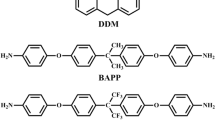Epoxy polymer samples cured by thermal and microwave methods under different temperature-time conditions are studied. The physical and mechanical parameters of the epoxy polymer samples, as well as their microstructure and fractographic fracture patterns, are studied. A tensile test method is used is used to determine the dependence of their strength parameters on the curing regime. Optimal regimes are identified for both curing methods, which makes it possible to obtain samples with maximum strength. Electron microscopy is used for comparative fractographic analysis of the fracture surfaces of samples with similar strength characteristics with thermal and microwave curing. It is found that microwave curing yields an increased globule size and more nanopores, as well as more pronounced local plastic deformation during fracture, and a larger spread in the ratio of the propagation velocities of main and secondary cracks. The dependence of the optical density of the test samples on the thermal and microwave curing regimes is established for wavelengths of 360–2500 nm.





Similar content being viewed by others
References
H. Lee and K. Nevill, Handbook of Epoxy Resins [Russian translation], Energiya, Moscow (1973).
M. L. Kerber, V. M. Vinogradov, G. S. Golovkin, et al., Polymer Composite Materials: Structure, Properties, Technology: Textbook, Professiya, St. Petersburg (2008), pp. 42–47.
S. L. Bazhenov, Mechanics and Technology of Composite Materials, Intellekt, Dolgoprudnyi (2014), p. 84.
K. Johnston, S. K. Pavuluri, M. T. Leonard, et al., Thermochim. Acta, 616, Sept., 100–109 (2015), https://doi.org/10.1016/j.tca.2015.08.010.
V. Tanrattanakul and K. Sae Tiaw, J. Appl. Polymer Sci., 97, No. 4, 1442–1461 (2005), https://doi.org/10.1002/app.215786.
S. G. Kalganova, Electrical Technology of Nonthermal Modifications of Polymer Materials in Microwave Electric Fields: Abstr. Doct. Dissert. Techn. Sci., Saratov (2009).
M. Boyle, C. Martin, and J. Neuner, Epoxy Resins. ASM Handbook (2001), Vol. 21, pp 78–89.
G. V. Malysheva, Trudy VIAM, No. 8(68), 23–27 (2018).
V. N. Nefedov, T-Comm: Telekommun. Transp., 11, No. 6, 33–37 (2017).
A. E. Ushakov, D. K. Polyakov, T. G. Sorina, et al., Patent No. 2189997 RF, Izobret. Polezn. Modeli, No. 27 (2002).
I. S. Deev, E. N. Kablov, L. P. Kobec, et al., Trudy VIAM, No. 7 (2014), 10.18577/2307-6046-2014-0-7-6-6, http://viam-works.ru, acc. 11.11.2020.
Y. C. Lin and X. Chen, Mater. Lett., 59, No. 29–30, 3831–3836 (2005), https://doi.org/10.1016/j.matlet.2005.06.061.
I. S. Deev and L. P. Kobec, Vysokomol. Soed., Ser. A, 38, No. 4, 627–633 (1996).
V. A. Lavrent’ev and S. G. Kalganova, Electrical and Thermal Technology Processes and Apparatus: Coll. Sci. Works, SGTU, Saratov (2005), Vol. 2, pp. 67–70.
S. G. Kalganova, Vest. SGTU, 1, No. 1(10), 90–95 (2006).
Yu. K. Dmitriev, R. R. Daminev, E. M. Abakacheva, and A. A. Islamutdinova, Bashkir. Khim. Zh., 19, No. 1, 203–206 (2012).
A. I. Gulyaev, N. O. Yakovlev, V. D. Krylov, and O. A. Lashov, Aviats. Mater. Tekhnol., No. 3 (48), 65–73 (2017).
E. K. Gamstedt and B. A. Sjogren, Compos. Sci. Technol., 59, 167–178 (1999), https://doi.org/10.1016/S0266-3538(98)00061-X.
P. Nygard and C. G. Gustafson, Composites: Part A, 34, No. 10, 995–1006 (2003), https://doi.org/10.1016/S1359-835X(03)00124-6.
D. Purslow, Composites, 17, No. 4, 289–303 (1986), https://doi.org/10.1016/0010-4361(86)90746-9.
M. G. González, J. C. Cabanelas, and J. Baselga, Infrared Spectroscopy – Materials Science, Engineering and Technology (2012), Vol. 2, pp. 261–284, https://doi.org/10.5772/36323.
Author information
Authors and Affiliations
Corresponding author
Additional information
Translated from Izmeritel’naya Tekhnika, No. 12, pp. 35–41, December, 2020.
Rights and permissions
About this article
Cite this article
Matveev, E.V., Mamontov, A.V., Gajdar, A.I. et al. Measurement of the Strength and Microstructural Characteristics of Epoxy Polymers Cured by Thermal and Microwave Methods. Meas Tech 63, 986–992 (2021). https://doi.org/10.1007/s11018-021-01882-9
Received:
Accepted:
Published:
Issue Date:
DOI: https://doi.org/10.1007/s11018-021-01882-9




